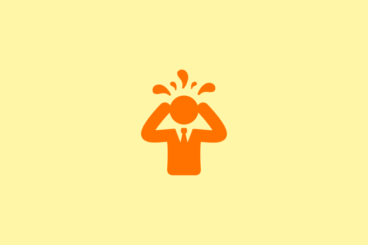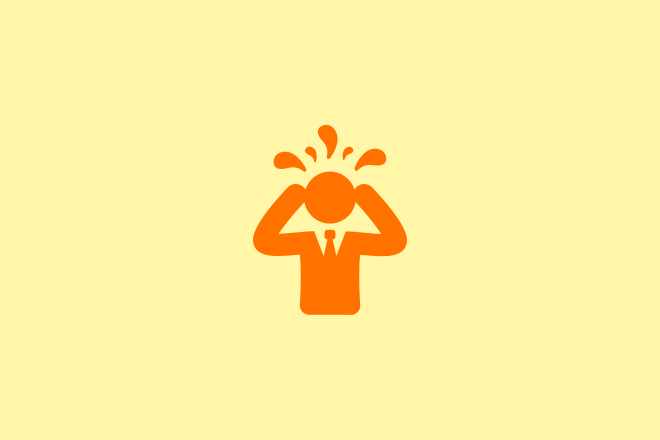
Whether you are new to the gig economy or have been doing it for a while, there are some common worries that almost all freelance designers share. While knowing you aren’t alone isn’t enough to alleviate all those fears, it can help to know many of your fears are common.
As someone who has done freelance work for the better part of 15 years, I can attest that some of these worries never go completely away. They do ebb and flow over time and you do learn to deal with them more effectively.
Here’s that list of worries with a little practical advice to help you manage common freelance concerns.
1. What If the Client Doesn’t Pay
Nothing worries freelancers more than getting paid. It’s your livelihood and if clients don’t pay you, there’s a trickle-down that happens from you to your bills.
Being proactive with clients can help a lot with this worry.
First, a freelancer should have a rainy day fund that includes several months’ income. This is the go-to when a client is late or slow to pay.
Have a late policy and fee for clients that do not pay on time. Publish it and enforce it. (This can help the always-late client feel incentivized to pay on time.)
Develop a plan for how to handle non—or late—payments. How soon do you follow up when payment begins to be late? Send an email first and then mail invoices. Depending on the amount owed, offer the opportunity to pay in installments.
Being proactive with clients can help a lot with this worry. Listen to your gut if a potential client asks a lot of questions about price and payment. Check references with other vendors. Require a deposit at the start of projects, and at different time intervals for projects that may take a long time or have a high value.
2. Projects Take Too Long or Get Me Bogged Down
Time can be one of the most valuable assets of a freelancer. There’s a balance between taking on projects and clients and having enough time to complete all the work.
You need to always have a clear idea of what you have in progress and get ready to start. Set realistic expectations of deadlines with clients. If a request is made and you can’t meet the deadline, say so upfront and offer alternative solutions to ensure you and the client feel that you are working fairly.
3. How to Find Time to Market Myself
Especially if you are busy right now, there’s always “time later” to work on your portfolio or business marketing. That can be a scary feeling because you know that work could dry up any time and you want to already be top of mind to ensure new clients keep coming in.
Plan time in your schedule for business marketing activities. Update your online portfolio and services offerings at least once a year. Develop a plan to post on social media, attend networking events, or get out in the community with the type of clients you want to work with most.
4. Learning/Understanding All the “Business Stuff”
Most freelancers like the work – design, development, interacting with clients, etc. – but not the business aspects that come with it.
As a freelancer, you are a business owner. You have to manage things like accounting, licenses and affiliations, and taxes. None of these things are probably why you started freelancing in the first place but are vital to keeping your venture operational and legal.
Budget to hire help in these areas. You don’t have to be an accountant and lawyer, too. Hire others to help you manage those aspects of the business and take that worry away from you.
5. My Client Has No Idea What They Want
There are two types of clients that come to you for design work:
- Those that know exactly what they want
- Those that have no idea what they want
Sadly, there are more of the latter than the former.
This is where mood board or visual examples can be helpful. (Have the client send you some ideas of things they like.)
Pair that with a limited set of design options from your end. When a client doesn’t know what they want, too many design options can be more of a burden and paralyze them with options. Take a “this or that” approach to showing options to help focus the client in the decision-making process.
6. Putting in a Lot of Time … And Not Getting the Client
A free consultation can be a blessing and a curse. But in this industry, it is uncommon to charge potential clients during the process of figuring out what they want and if they want to hire you. Unfortunately, that can sometimes take a long time and even result in you not getting the business.
Your normal rates and fee structure should account for this time.
You should also limit the amount of time you spend with a potential client and cut your losses early if you feel like it is not going anywhere. Generally, one meeting and an estimate of services is the expectation.
7. Making Deadlines
What if I miss a deadline?
Making deadlines is a vital part of freelance work. It will keep clients happy and is the key to maintaining an even flow of work. Sometimes it will happen and you will miss a deadline though – things do happen.
The best thing you can do is be proactive with clients and manage their expectations if trouble arises. If you get sick the week of a big deadline, let the client know. Figure out how to make the most of the situation and make it right for you and the client.
8. Client Asks for Something Outside of Your Expertise
No matter what kind of freelance work you do, there’s always the possibility that an existing client or new one will ask for something that’s a little out of your wheelhouse. But you don’t want to lose that client to someone else.
…it’s beneficial to have a strong network of people that you can sub work to.
This is a valid worry. The minute you refer a client to someone else to do part of the work, they could always decide that person or company is more capable or a better fit.
This is where is it beneficial to have a strong network of people that you can sub work to. This network helps deepen the bench for your company of one and allows you to continue to get work done for clients.
The important thing to think about upfront is that subbing out projects can add costs for a client and while it is a good complement to things you typically do, it should not become all you do (unless you want to be in the business of managing contractors).
9. How Do You Handle Scope Creep and Charge More
While every freelancer likes making more money, asking a client to pay more due to scope creep is often a tricky situation. It can be uncomfortable, but again this is all about managing expectations.
Do you have a fee or contingency for scope creep in your contract or payment terms? (You probably should.)
Then talk to the client before you get 20 extra hours into the project. If you see scope creep coming on, it is best to have that conversation head-on early.
Often, clients will understand they are asking for more than originally outlined and understand that your time should be compensated. What you should never do is send an extra bill without having that talk first.
10. Finding New or Good Clients
Where do clients come from? They always seem to come – and go – in clusters. There’s always a floodgate or work or a trickle. Clients all seem to want things at the same time and then nothing at all.
The best clients often come by referral or word of mouth. Incentivize clients to send others to you from their networks – maybe with a small referral bonus or discount on a future service.
The best clients come to you with projects that are in your wheelhouse and are interesting to you. Taking on a job that isn’t a fit just because you need the work is often a struggle.
Remember to put yourself out there. Leverage local networking and professional associations. Connect with your peers and if you are open to subcontracting or other working relationships be upfront about that. You never know what new work or clients might come from it.









